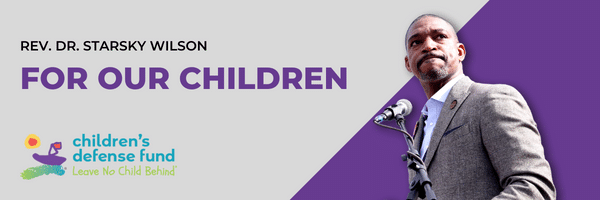Earlier this year, Juvenile Justice Information Exchange published a story with an encouraging headline: “Juvenile prison populations reach all-time lows”. At a time when our nation seems to be taking many steps backward, this headline initially gave me a thrill of hope that progress is still possible. However, that headline only tells us part of the story.
The Office of Juvenile Justice and Delinquency Prevention revealed the number of children and youth incarcerated in juvenile prisons fell to an all-time low in 2020, the most recent year for which federal child incarceration data is available. It showed the number of young people in those facilities had fallen 77 percent compared to what it was two decades ago at the turn of the millennium.
While those statistics seem promising at first glance, right now, on a typical day, 25,000 young people are still held in juvenile detention facilities across the country, according to the U.S. Department of Justice. That’s more than the capacity of Madison Square Garden, in New York, or any other arena in the NBA.
Furthermore, Black and Brown children are still disproportionately imprisoned in this country, which adds to the list of barriers they are likely to face in adulthood because of the color of their skin.
CDF’s State of America’s Children® 2023 report found, of the 265,000 young people arrested in the United States in 2021, one-third were Black, while Black children only represent 15 percent of the nation’s youth population. What’s more, two-thirds of young people in the juvenile justice system are Black and Brown young people.
In March, The Sentencing Project detailed the grave impact incarceration can have on young people long-term. Their report found incarceration produces counterproductive outcomes. Among other things, juvenile incarceration does not reduce delinquent behavior, impedes young people’s success in education and employment, and does lasting damage to the health and well-being of these young people.
That’s why I am troubled by some state lawmakers, who continue to fund this flawed and harmful system with ridiculous amounts of money.
Recently, California lawmakers floated a plan to approve a proposal labeled Assembly Bill 695. The bill would have effectively provided Los Angeles County $1 billion in state funding for physical renovations to its juvenile detention facilities, according to our policy experts at Children’s Defense Fund-California. That would have been in addition to $200 million LA county had already budgeted for facility renovations.
All the while, Los Angeles’ juvenile halls have been a major source of controversy this year.
Just this May, California’s Board of State and Community Corrections found the county’s two juvenile halls unsuitable for confining youth. As our Children’s Defense Fund-California staff recently testified to lawmakers, the state’s orders were in response to the egregious physical, sexual, and emotional abuse that has gone on for decades in LA county’s juvenile probation system. The state’s own board agreed!
“LA County has been unable to correct items of noncompliance that threaten the well-being of youth, including: inadequate safety checks; room confinement that extends beyond what is outlined in regulations; the lack of programs, recreation and exercise; inadequate staffing; and use of force,” the California Board of State and Community Corrections said.
CDF’s California State Director, Thomas Harvey, noted this pattern was not new:
“If we took the lawsuits, the DOJ investigations, and the seemingly endless series of articles about it seriously, we wouldn’t be talking about adding another billion dollars to that system.”
So, this begs the question: why didn’t lawmakers propose spending all that money on programs that would actually help California’s youth instead of ones that hurt them?
As CDF-CA Youth Justice Director Milinda Kakani recently put it: “Continuing to invest in the status quo is an investment in the failure and trauma of our young people.”
California, the fifth largest economy in the world according to Forbes, has 1.4 million young people living in poverty. The California Department of Public Health said that figure accounted for sixteen percent of the state’s population in 2021.
Could you imagine what $1 billion could do for the mental and physical well-being of all those children and youth in need? That money could help fulfill their nutrition, education, and housing needs.
Instead, some California lawmakers want to use it to fund expanded child prisons instead of fixing the systemic problems that – in many cases – land our young people there in the first place.
I am pleased Governor Newsom (CA) ultimately vetoed that proposal last Sunday, as reported here in the Los Angeles Daily News.
Still, we at Children’s Defense Fund call on leaders, not just in California, but across the United States, to think differently about how they use taxpayer money to serve young people. There are so many policy and practice reforms that can help support healthy behaviors and improve the personal outcomes of our youth.
Our leaders must focus more of their time toward providing them the positive opportunities they need to thrive. It is not only what they need but deserve.

